Home & Garden
Freiburg, Mar 30, 2017
After 20,000 Lego bricks and 300 hours of work, the history students Oliver Isensee and Kevin Walter from the University of Freiburg have managed to build a Lego replica of the villa urbana at the Roman museum in Heitersheim. Museum visitors can admire this miniature scale masterpiece as of April 1, 2017.
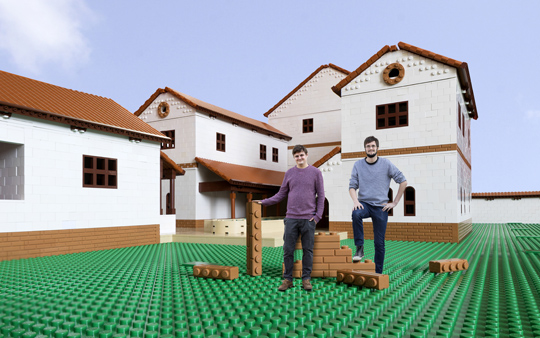
Architects with fine motor skills: Oliver Isensee (left) and Kevin Walter worked for seven months on their project to build a replica of the Roman villa out of Lego bricks. Photos: Jürgen Gocke
The ancient villa with luxurious furnishings and a spacious park is a popular place to take friends and family who are visiting Southern Germany. The two history students Oliver Isensee and Kevin Walter from the University of Freiburg, who have visited the villa urbana in the Roman museum in Heitersheim many times, all of a sudden had an idea last August: Wouldn't it be great if history could be presented in an interactive way to make it more alive? And what if they used this familiar villa as a model? Walter, who is an experienced model builder, came up with the idea for the building material: They would build their model out of Lego bricks.
The two students set out by taking photographs of the plastic model in the museum and creating a virtual model on a computer to use as a guide. Building the Lego villa took two weekends and some help from friends and a few neighbors. In the end, almost 20,000 bricks were used to build the decorative pool, columns, walls, hallways, and various rooms.
Built with donations
The only detail they didn't build was the basement below the pavilion behind the villa. "Otherwise, we would have had to build the model higher, and that would have been a lot more work. It also would have driven up the costs," explained Walter. The project Public BRICKstory has cost €1,900 so far, and the planned furnishing of the rooms – for example, with Roman couches, wall paneling, and mosaic floors – will cost an estimated additional €1,000. The project was financed by donations from the Chlausdig Stammtisch, which is a group of entrepreneurs from the region who meet on a regular basis, along with the Mayor of Heitersheim Martin Löffler, and the Historical Society. They also received private donations.
A playful way to learn
Before the model could be shown, the two builders had to take the Lego villa apart to move it from Isensee's apartment in Pfaffenweiler to the Villa urbana museum. Once at the museum, school classes and other visitors will be able to furnish the rooms of the model, while learning about the typical interior of a Roman villa and Roman religion in the process. This is exactly what Isensee and Walter are hoping to achieve. They have made it possible for people to experience history in a new way and from a new perspective. "Of course, visitors are welcome to play with the model, as long as they're careful. Lego is a toy, after all, and we don't want to take away that aspect," says Isensee.
Miniature masterpiece in the museum
The Lego model will be open for visitors to look at and touch from April 1, 2017, to October 31, 2018, in the basement of the Roman museum Villa urbana. "It's great that we managed our first project with such success, even though it was more or less an experiment," Walter says, adding, "How the whole thing will continue to develop is also dependent on how visitors react to the model." After the exhibition, the two students will dismantle the villa and use the pieces for another building project perhaps.
Mariella Hutt
Villa urbana
The villa urbana, which is part of the Roman Park in Heitersheim today, was the residence of an estate owner from roughly 30 to 275 AD. The villa complex consisted of a luxurious living space, an area for farming and crafts, as well as a park-like garden. The Roman museum is now located where the main building once stood. Visitors can look at the reconstructed parts of the living quarters, a decorative pool with a fountain figure, sections of a mosaic floor, and everyday objects from Roman times.
Virtual tour of the Roman villa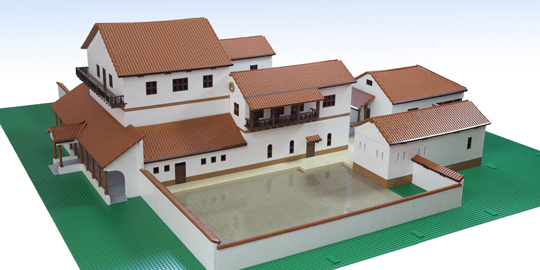
The front of the building consisted of the arcade, which was called the porticus, the balcony, and the main floor of the villa, which the estate owner used as living quarters. The balcony and the porticus faced the driveway leading to the estate. The balcony offered a view over the entire area in front of the villa. In the foreground (right) was the exercise area called the palaestra, which was surrounded by an enclosing wall as well as a rubble wall.
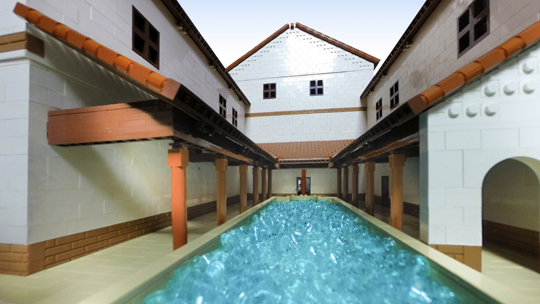
The ambulatory, or roofed walkway, was lined with columns and encircled the pool on three sides. It was located at the rear of the villa, between the north and south wing, and had a connecting door to the main hall, where receptions were held.
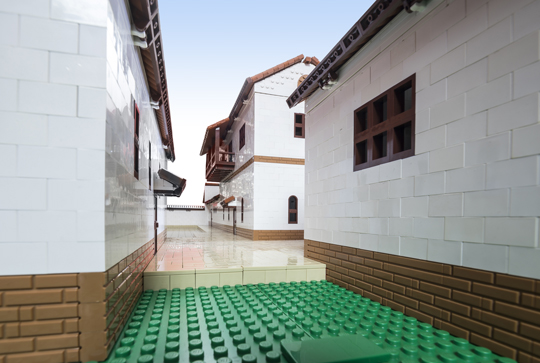
On the left was the bathhouse, where the villa's toilet and bathing facilities were located. Straight ahead was the south wing, where guests stayed in quarters on the second level and shared a balcony overlooking the palaestra.
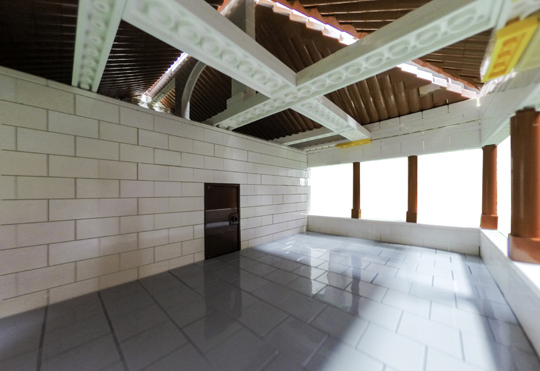
If the weather was favorable, the outside eating area of the pavilion was used.
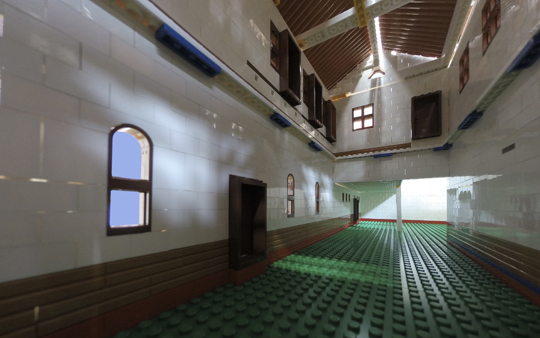
Inside the south wing, the first and second floor are visible, but the ceiling separating the two is still missing. There will be workshops for school kids to furnish the rooms and make the model even more life-like.

